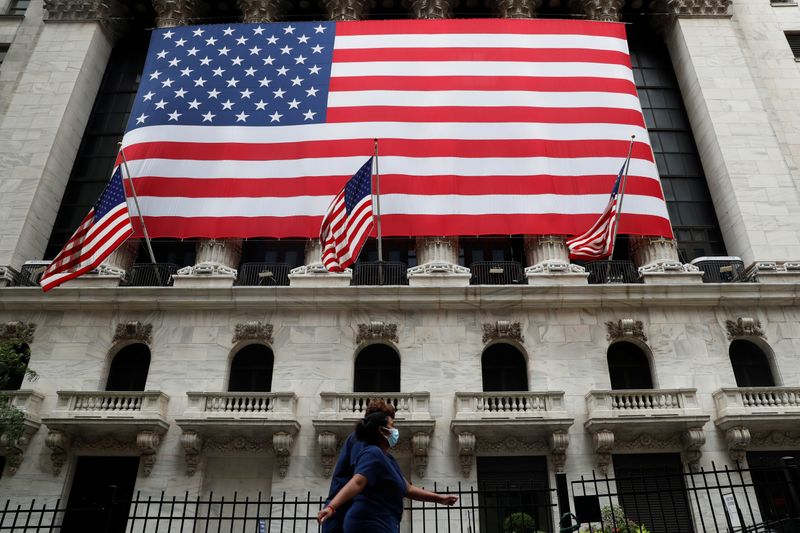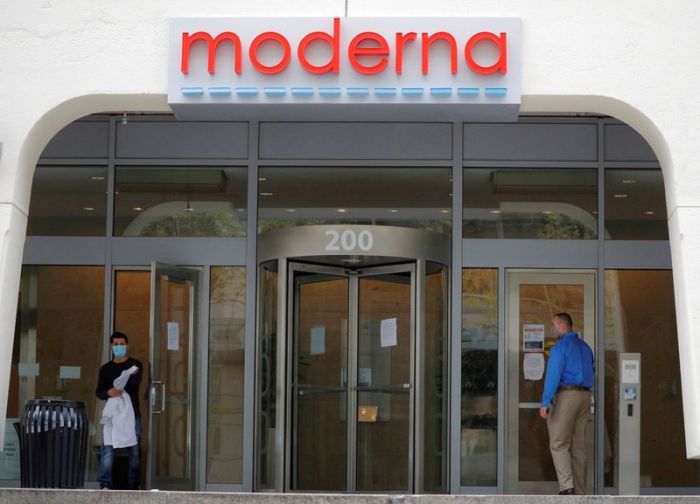(Reuters) – U.S. stocks fell on Friday as technology shares sold off for a third day in a row, while all three major U.S. indexes posted a third straight week of declines.
It was the Nasdaq’s first such weekly streak since August 2019, and S&P 500 and Dow’s first since early October 2019.
Apple Inc <AAPL.O>, Microsoft Corp <MSFT.O>, Amazon.com Inc <AMZN.O> and Alphabet Inc. <GOOGL.O>, which helped to fuel the market’s rally off the March lows, were among the biggest drags on the S&P 500 and Nasdaq on Friday, while the S&P 500 technology index <.SPLRCT> fell 1.7%, the biggest weight among the S&P 500 sectors. Apple was down 3.2%.
“We had a market peak on Sept. 2, and then we had a rapid decline and a lot of that came in technology and growth stocks that had done so well,” said Tom Martin, senior portfolio manager at Globalt Investments in Atlanta.
But even though the market has had a sell-off in technology and growth, “it doesn’t mean the (valuation) extremes are fully worked off,” he said.
Friday marked the quarterly expiration of U.S. stock options, stock index futures and index option contracts, known as “quadruple witching,” bringing increased trading volume at the market close.
Volume on U.S. exchanges was 14.31 billion shares, the highest since this year’s reconstitution by FTSE Russell of its indexes in June.
The Dow Jones Industrial Average <.DJI> fell 244.56 points, or 0.88%, to 27,657.42, the S&P 500 <.SPX> lost 37.54 points, or 1.12%, to 3,319.47 and the Nasdaq Composite <.IXIC> dropped 117.00 points, or 1.07%, to 10,793.28.
The Dow ended just barely lower on the week, while the S&P 500 fell 0.7% and the Nasdaq dropped 0.6% for the week.
Strategists said investors appeared to be continuing a recent rotation out of high-flying tech-related stocks and into other sectors.
“It looks to be sentiment driven and, to some extent, it appears to be rotational to us,” said Rob Haworth, senior investment strategist at U.S. Bank Wealth Management in Seattle.
“We’re not sure this really indicates there’s a problem with economic growth, but rather, it’s some profit-taking, some adjustment and rotation” between sectors, he said. “You’re moving from the biggest weights in the market to the smallest weights.”
The S&P 500 materials <.SPLRCM> is the best-performing sector so far this month, while S&P 500 technology is the worst.
Investors kept a close eye on rising coronavirus cases overseas. European countries from Denmark to Greece announced new restrictions on Friday to curb surging coronavirus infections in some of their largest cities, while Britain was reported to be considering a new national lockdown.
Tesla rose 4.4% as two analysts raised their price targets on the electric carmaker’s shares ahead of its highly anticipated “Battery Day” event next week.
Declining issues outnumbered advancing ones on the NYSE by a 2.02-to-1 ratio; on Nasdaq, a 1.12-to-1 ratio favored decliners.
The S&P 500 posted 13 new 52-week highs and no new lows; the Nasdaq Composite recorded 67 new highs and 26 new lows.
(Additional reporting by Sinead Carew, Shreyashi Sanyal and Devik Jain; Editing by Maju Samuel and David Gregorio)

























